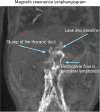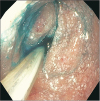1. Greenwald DA. Protein-losing gastroenteropathy. In : Feldman M, Friedman L, Brandt L, editors. Sleisenger and Fordtran's gastrointestinal and liver disease. 10th ed. Philadelphia: Saunders;2016. p. 464–470.
2. Levitt DG, Levitt MD. Protein losing enteropathy: comprehensive review of the mechanistic association with clinical and subclinical disease states. Clin Exp Gastroenterol. 2017; 10:147–168.

3. Johnson JN, Driscoll DJ, O'Leary PW. Protein-losing enteropathy and the Fontan operation. Nutr Clin Pract. 2012; 27:375–384.

4. Mertens L, Hagler DJ, Sauer U, Somerville J, Gewillig M. Protein-losing enteropathy after the Fontan operation: an international multicenter study. PLE study group. J Thorac Cardiovasc Surg. 1998; 115:1063–1073.

5. Malcic I, Sauer U, Stern H, Kellerer M, Kühlein B, Locher D, et al. The influence of pulmonary artery banding on outcome after the Fontan operation. J Thorac Cardiovasc Surg. 1992; 104:743–747.

6. John AS, Johnson JA, Khan M, Driscoll DJ, Warnes CA, Cetta F. Clinical outcomes and improved survival in patients with protein-losing enteropathy after the Fontan operation. J Am Coll Cardiol. 2014; 64:54–62.

7. Gleason WA Jr, Roodman ST, Laks H. Protein-losing enteropathy and intestinal lymphangiectasia after superior vena cava--right pulmonary artery (Glenn) shunt. J Thorac Cardiovasc Surg. 1979; 77:843–846.

8. Meadows J, Jenkins K. Protein-losing enteropathy: integrating a new disease paradigm into recommendations for prevention and treatment. Cardiol Young. 2011; 21:363–377.

9. Meadows J, Gauvreau K, Jenkins K. Lymphatic obstruction and protein-losing enteropathy in patients with congenital heart disease. Congenit Heart Dis. 2008; 3:269–276.

10. Rychik J, Spray TL. Strategies to treat protein-losing enteropathy. Semin Thorac Cardiovasc Surg Pediatr Card Surg Annu. 2002; 5:3–11.

11. James H, Witte MH, Bernas M, Barber B. Proposal for prevention or alleviation of protein/lymph-losing enteropathy (PLE/LLE) after Fontan circulation treatment of univentricular hearts: restoration of lymph balance with a “lymphatic right-to-left shunt.”. Lymphology. 2016; 49:114–127.
12. Petersen VP, Hastrup J. Protein-losing enteropathy in constrictive pericarditis. Acta Med Scand. 1963; 173:401–410.

13. António M, Gordo A, Pereira C, Pinto F, Fragata I, Fragata J. Thoracic duct decompression for protein-losing enteropathy in failing fontan circulation. Ann Thorac Surg. 2016; 101:2370–2373.

14. Connor FL, Angelides S, Gibson M, Larden DW, Roman MR, Jones O, et al. Successful resection of localized intestinal lymphangiectasia post-Fontan: role of (99m)technetium-dextran scintigraphy. Pediatrics. 2003; 112(3 Pt 1):e242–7.

15. Magdo HS, Stillwell TL, Greenhawt MJ, Stringer KA, Yu S, Fifer CG, et al. Immune abnormalities in Fontan protein-losing enteropathy: a case-control study. J Pediatr. 2015; 167:331–337.

16. Müller C, Wolf H, Göttlicher J, Zielinski CC, Eibl MM. Cellular immunodeficiency in protein-losing enteropathy. Predominant reduction of CD3+ and CD4+ lymphocytes. Dig Dis Sci. 1991; 36:116–122.
17. Goldberg DJ, Dodds K, Avitabile CM, Glatz AC, Brodsky JL, Semeao EJ, et al. Children with protein-losing enteropathy after the Fontan operation are at risk for abnormal bone mineral density. Pediatr Cardiol. 2012; 33:1264–1268.

18. Guez D, Nadolski GJ, Pukenas BA, Itkin M. Transhepatic lymphatic embolization of intractable hepatic lymphorrhea. J Vasc Interv Radiol. 2014; 25:149–150.

19. Itkin M, Piccoli DA, Nadolski G, Rychik J, DeWitt A, Pinto E, et al. Protein-losing enteropathy in patients with congenital heart disease. J Am Coll Cardiol. 2017; 69:2929–2937.

20. Latson L. Once more unto the breach: a new treatment paradigm for protein-losing enteropathy. J Am Coll Cardiol. 2017; 69:2938–2940.










 PDF
PDF ePub
ePub Citation
Citation Print
Print



 XML Download
XML Download